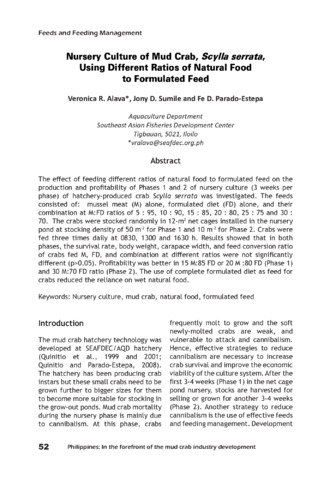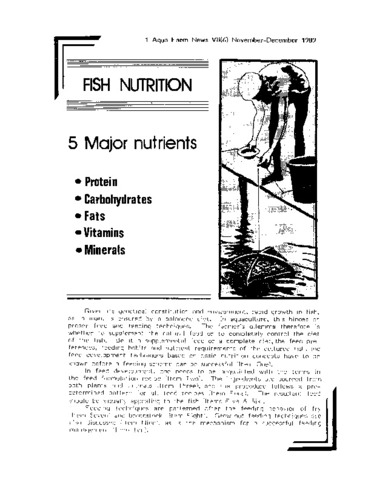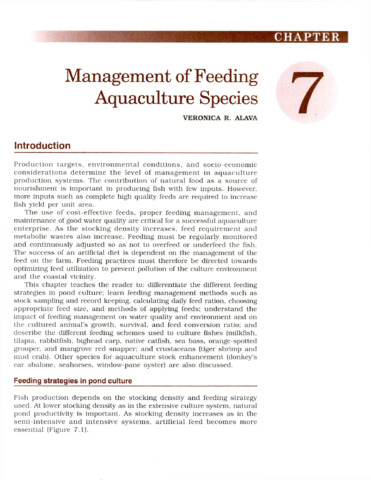Effects of the dietary fermented tuna by-product meal on growth, blood parameters, nonspecific immune response, and disease resistance in juvenile olive flounder, Paralichthys olivaceus
Share
| dc.contributor.author | Oncul, Fatma Ozgun | |
| dc.contributor.author | Aya, Frolan | |
| dc.contributor.author | Hamidoghli, Ali | |
| dc.contributor.author | Won, Seonghun | |
| dc.contributor.author | Lee, Geon | |
| dc.contributor.author | Han, Kyoung R. | |
| dc.contributor.author | Bai, Sungchul C. | |
| dc.date.accessioned | 2018-05-30T06:39:14Z | |
| dc.date.available | 2018-05-30T06:39:14Z | |
| dc.date.issued | 2019 | |
| dc.identifier.citation | Oncul, F. O., Aya, F. A., Hamidoghli, A., Won, S., Lee, G., Han, K. R., & Bai, S. C. (2019). Effects of the dietary fermented tuna by-product meal on growth, blood parameters, nonspecific immune response, and disease resistance in juvenile olive flounder, Paralichthys olivaceus. Journal of the World Aquaculture Society, 50(1), 65-77. | en |
| dc.identifier.issn | 0893-8849 | |
| dc.identifier.uri | http://hdl.handle.net/10862/3303 | |
| dc.description.abstract | This study evaluated the effects of dietary fermented tuna by‐product meal (FTBM) in juvenile olive flounder, Paralichthys olivaceus. Five diets were formulated to replace fishmeal (FM) with FTBM at 0% (FTBM0), 12.5% (FTBM12.5), 25.0% (FTBM25), 37.5% (FTBM37.5), or 50% (FTBM50). After 8 wk, weight gain, specific growth rate, and feed efficiency of fish fed FTBM0 and FTBM12.5 diets were significantly higher than fish fed the other diets (P < 0.05). Also, mean cumulative survival rates (%) of fish fed the FTBM0 and FTBM12.5 diets were significantly higher than those fed FTBM50 diet at Day 9 postchallenge with Edwardsiella tarda (P < 0.05). Protein efficiency ratio of fish fed FTBM0 and FTBM12.5 diets was significantly higher (P < 0.05) than fish fed diets FTBM37.5 and FTBM50. Broken‐line regression analysis of weight gain showed an optimal FM replacement level of 10.65% with FTBM. Therefore, the optimal dietary inclusion of FTBM in juvenile olive flounder diets could be greater than 10.65% but less than 12.5% without any adverse physiological effects on fish health. | en |
| dc.language.iso | en | en |
| dc.publisher | World Aquaculture Society | en |
| dc.relation.uri | https://www.onlinelibrary.wiley.com/doi/pdfdirect/10.1111/jwas.12535 | |
| dc.subject | Paralichthys olivaceus | en |
| dc.subject | flounders | en |
| dc.title | Effects of the dietary fermented tuna by-product meal on growth, blood parameters, nonspecific immune response, and disease resistance in juvenile olive flounder, Paralichthys olivaceus | en |
| dc.type | Article | en |
| dc.citation.volume | 50 | |
| dc.citation.issue | 1 | |
| dc.citation.spage | 65 | |
| dc.citation.epage | 77 | |
| dc.citation.journalTitle | Journal of the World Aquaculture Society | en |
| dc.subject.asfa | disease resistance | en |
| dc.subject.asfa | fermented products | en |
| dc.subject.asfa | immunity | en |
| dc.subject.asfa | feeding experiments | en |
| dc.subject.asfa | fishmeal | en |
| dc.subject.asfa | artificial feeding | en |
| dc.subject.asfa | growth rate | en |
| dc.subject.asfa | feed efficiency | en |
| dc.subject.asfa | feeds | en |
| dc.identifier.essn | 1749-7345 | |
| dc.identifier.doi | 10.1111/jwas.12535 | |
| dc.subject.scientificName | Edwardsiella tarda | en |
Files in this item
| Files | Size | Format | View |
|---|
This item appears in the following Collection(s)
-
AQD Journal Articles [1215]
These papers were contributed by AQD staff to various national and international journals



